| Since the 1970's, Bilston Street has changed almost beyond
recognition. Much of the western end of the street disappeared
under the new police station and the ring road development.
The ex-Sainsbury's supermarket occupies the old St. George's
church and graveyard, and much of the northern side of the
street lies under the new dual carriageway. Bilston Street was
the focal point for the local community. It had many small shops
that catered for
everyday needs, and several public houses. The town's cattle
market was there, as was the hub of the local authority's
transport system. Most of the buildings were nothing special,
although the street did include several good Georgian
houses. Bilston Street has hardly been mentioned in any of the
books of old photographs of the town, and the old landscape is
rapidly being forgotten. Hopefully these photographs will
re-kindle old memories and pass on what was there to a younger
generation. Most of the photographs were taken in the 1970's, a
little while before demolition started. If anyone has any other
photographs that I can add, or any memories of the street, please
contact the webmaster.
|
| The walk starts at the junction of Bilston Street and Market Street,
alongside what is now the new police headquarters and ends at the
junction of Bilston Street, Bilston Road and Steelhouse Lane. |
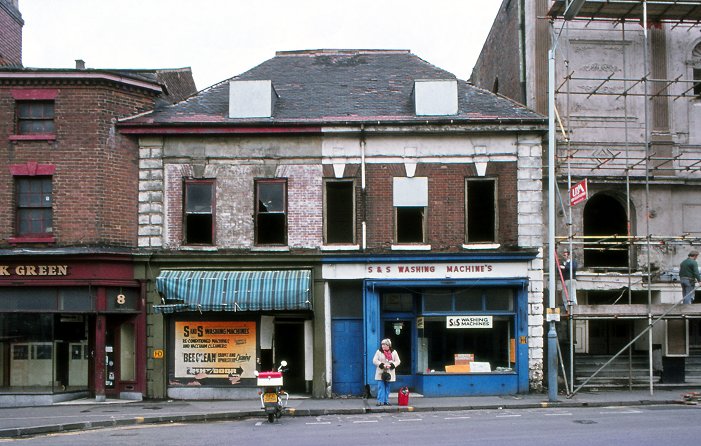
On the left is J. Green's cycle shop, and next door at numbers
8a and 9 are two shops that were last occupied by S & S Washing
Machines. Previously number 8a was occupied by E. A. Gray
(Continental Stores) Limited, and H. H. Manning's hairdressers
shop was at number 9. The two shops occupy the ground floor of
one of the fine houses that were in this
part of the street. |
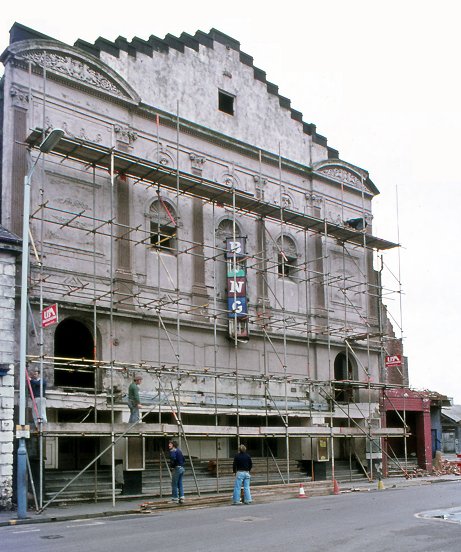 |
The Clifton Cinema during demolition in 1981.
It was built in 1863 as a theatre, and during its lifetime
has seen many changes. It began life as the Prince of Wales, later becoming the Star, and then the Hippodrome.
It became known locally as the 'Blood Tub' because many of
the plays at the time featured a murder. When the original
Theatre Royal in Cleveland Road closed, the Hippodrome
became the New Theatre Royal. In 1913 the theatre was badly
damaged by fire and then subsequently rebuilt. It became the
Clifton in 1931 after being converted to a cinema.
It closed in February 1966 and the following month re-opened
as a bingo club, which finally closed in 1978. After several
years of dereliction, it was demolished to make way for the
new police headquarters which opened in 1992. |
| Another view of the Clifton Cinema. |
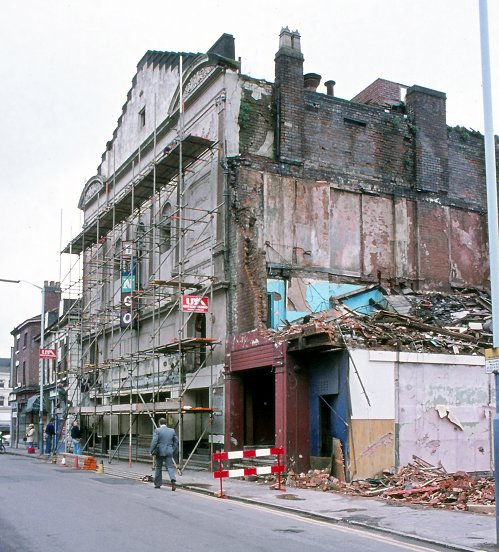 |
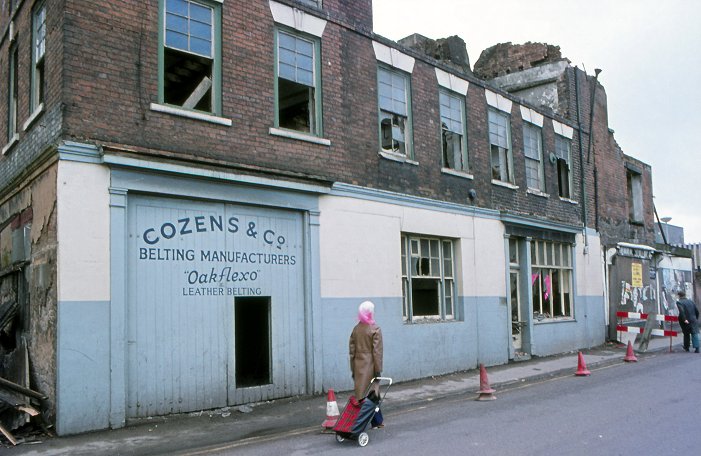
Across the road from the Clifton Cinema at numbers 150 and
151 is Cozens & Company's factory where all kinds of
industrial belts were produced. On the right is Smart Shoe
Repairs' shop, and the premises of G. P. Hammond, a
commercial artist. |
|
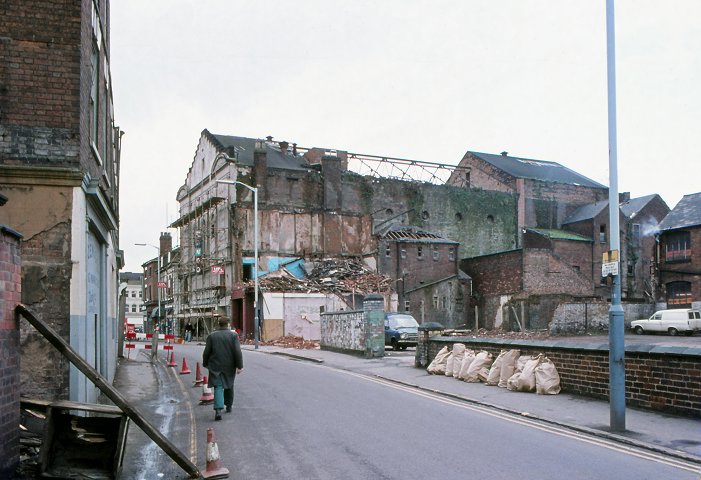
Another view, looking towards Market Street. |
|
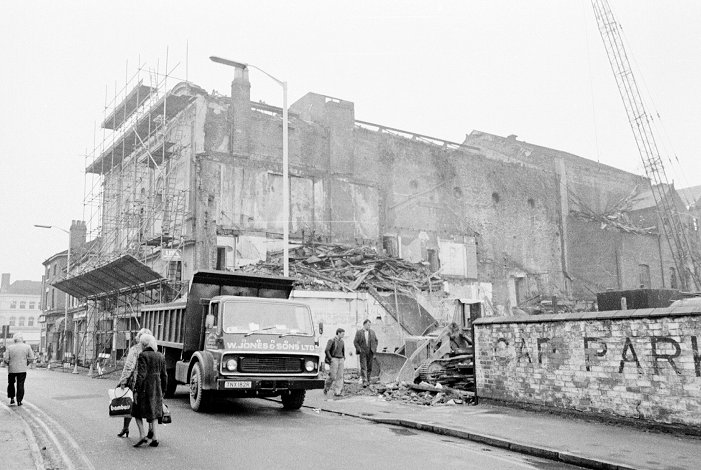
A final view of the cinema, as demolition progressed. |
|
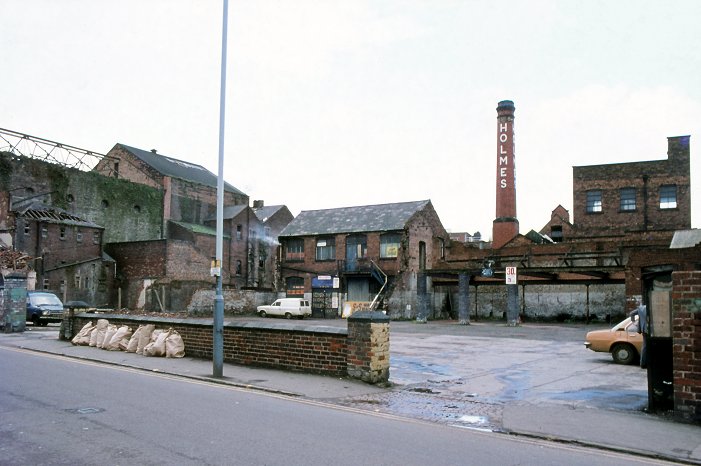
Next to the cinema is a car park with S & S Washing
Machines' workshop at the rear. |
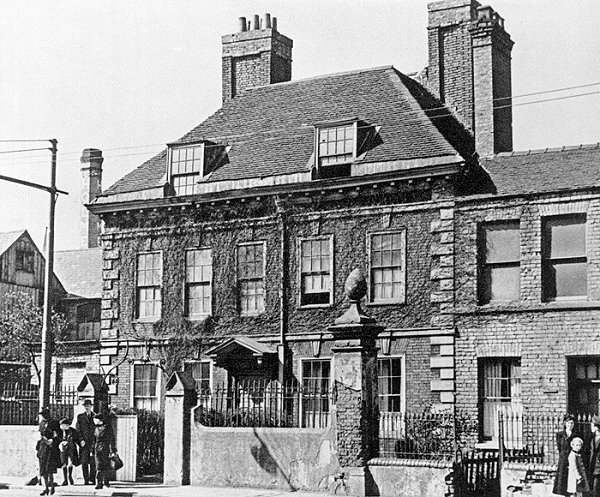
A grand house that once stood on the site of the car park,
above. The fine early 18th century house was eventually
converted into shops, and demolished in 1953. |
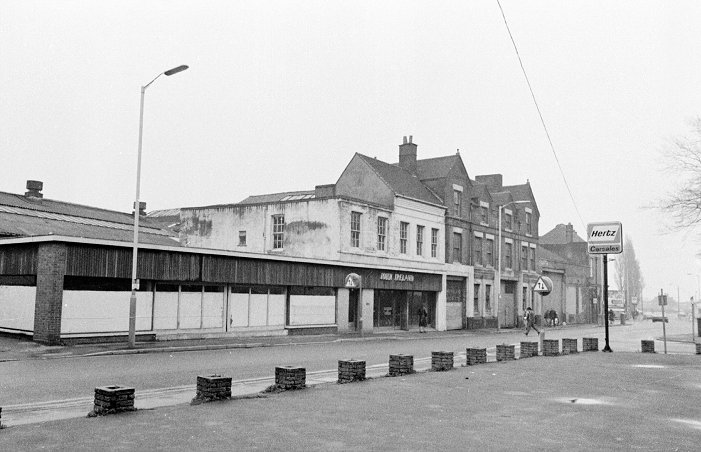
This view from the Hertz car sales car park on the southern
side of the street is
looking towards the junction of Piper's Row and Walsall Street.
The building opposite was the premises of car dealer, John Ireland.
It is now the site of the new police headquarters. The
remains of some of the once-grand buildings can still be
seen. |
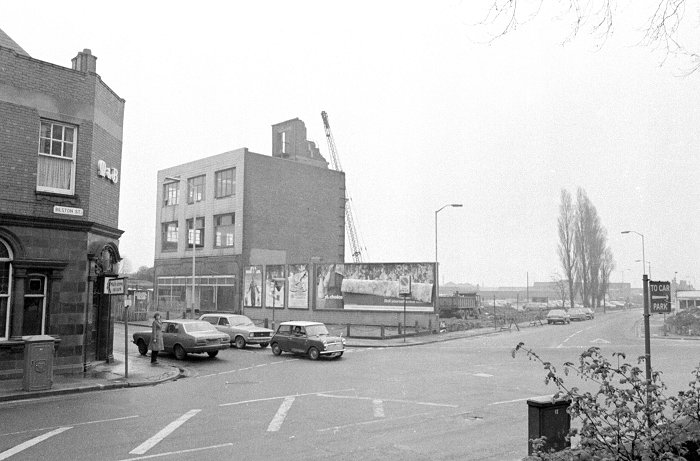
On the corner of Pipers Row is the once popular Blue Ball
public house, and across the road, under demolition is the
premises of Alexander Sloan, house furniture. |
|
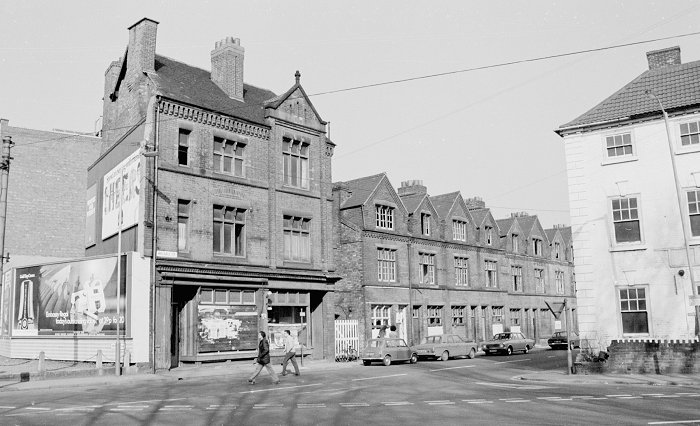
Walsall Street junction. |
|
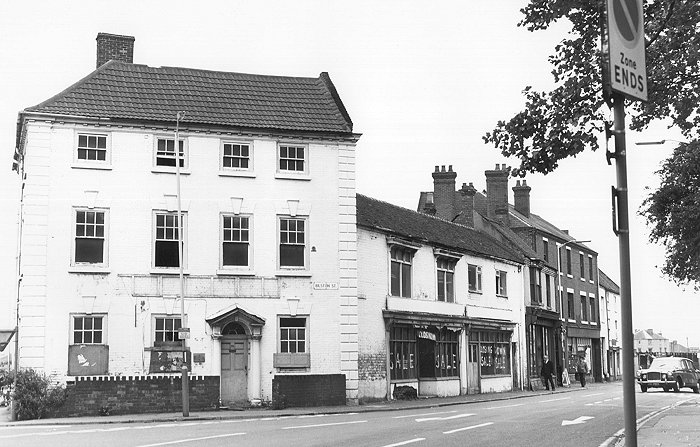
The fine Georgian house that stood on the corner of
Walsall Street and Bilston Street. |
|
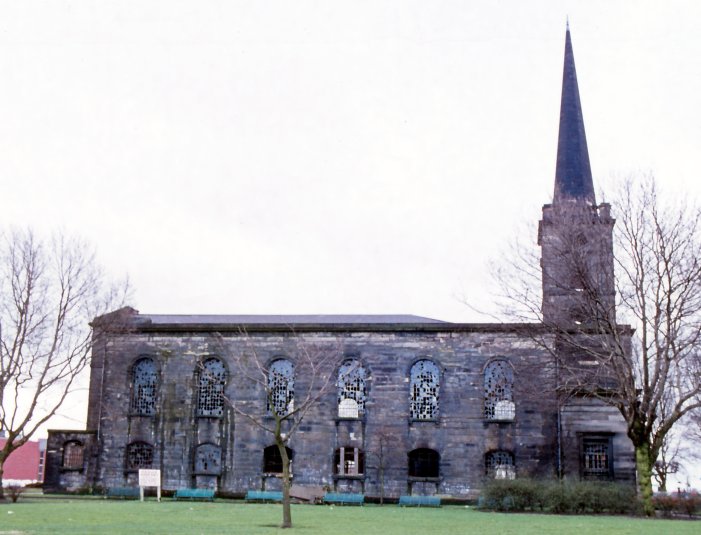
St. Georges Church from Bilston Street. Until recently the site of Sainsbury's supermarket. |
|

The shop on the left was once occupied by L. Morrison, a
radio dealer. |
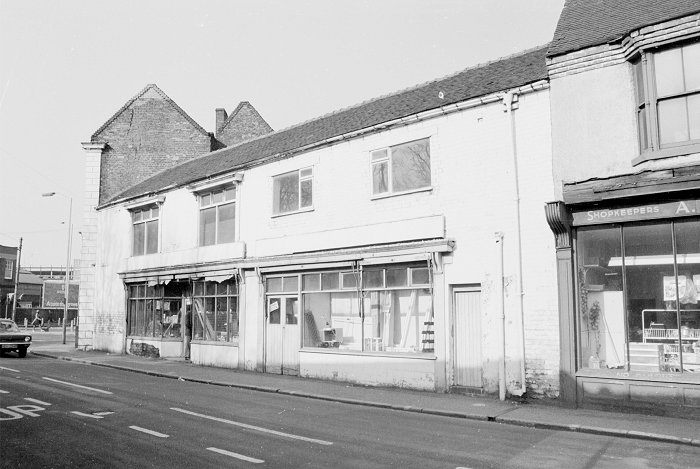
In its later years the shop on the left was a junk shop
where all kinds of old electrical and electronic bits and
pieces were sold. |
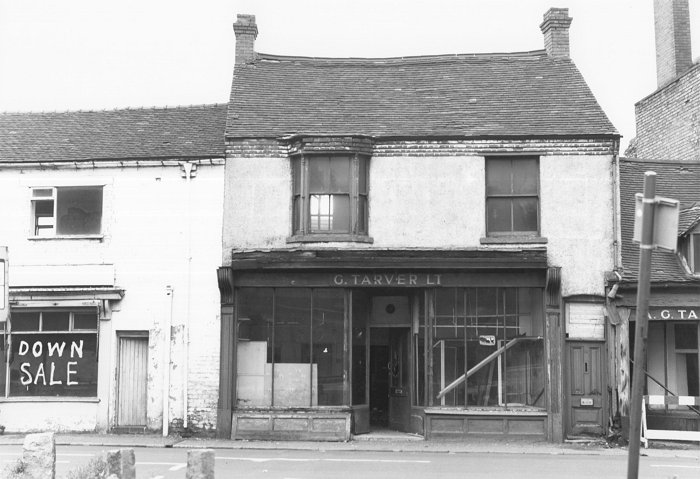
This photograph, taken from the corner of
Market Avenue shows the premises of A. G. Tarver Limited,
shopkeepers' outfitters. |
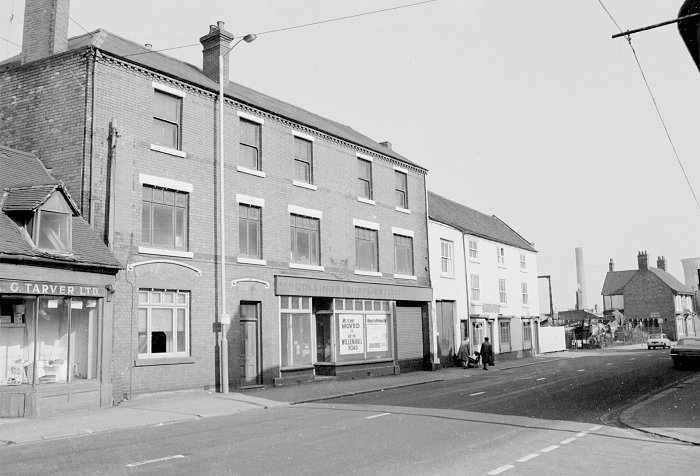
A. G. Tarver Limited had two adjacent shops, the one on
the left and the one in the photograph above. In the centre is Collings Supplies Limited. |
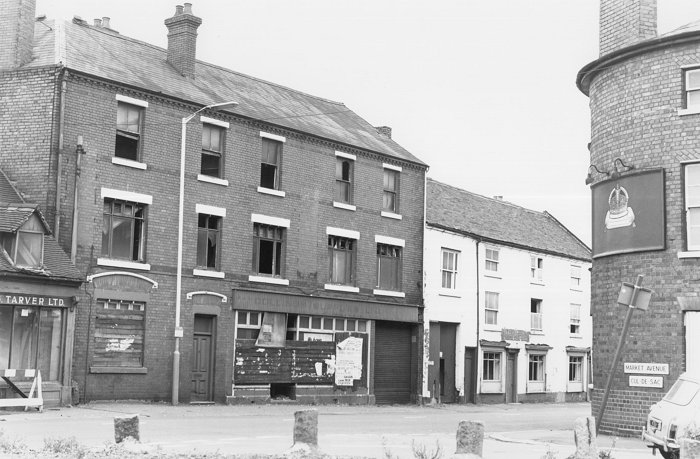
Another view of the shops on the previous photograph, just
before demolition. On the right, at the corner of Market
Avenue is the Crown & Cushion public house. |
|

The Crown and Cushion awaits its fait. Courtesy of David
Parsons. |
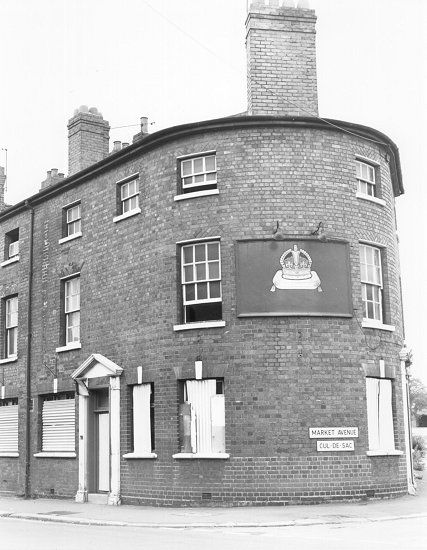 |
Another view of the Crown & Cushion, on the corner of
Market Avenue. |
| The Crown & Cushion, and some of the shops on the south
side of Bilston Street. Next door to the pub was Ernest
Higgs & Son Limited, stationers, then T. R. & G. L. Bailey,
confectioners and newsagents, and next left, J. C. Burns &
Company, corn merchants. |
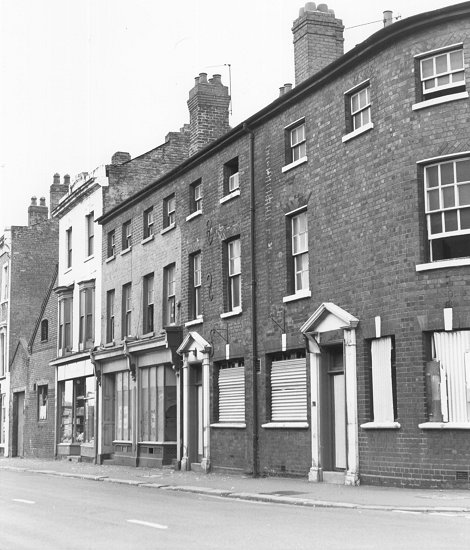 |
|
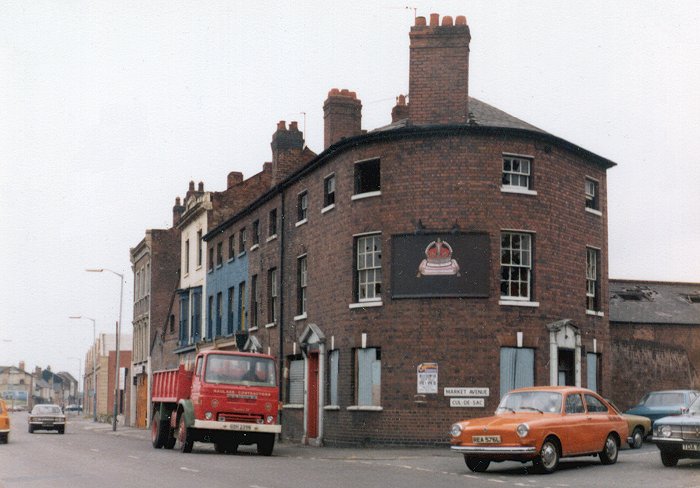
A final view of the Crown & Cushion. |
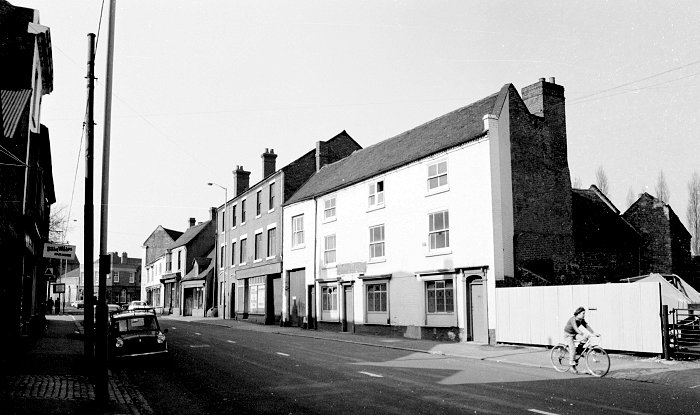
Looking back along the route so far covered. All
of the buildings in the photograph are on the site of the modern
ring road roundabout. |
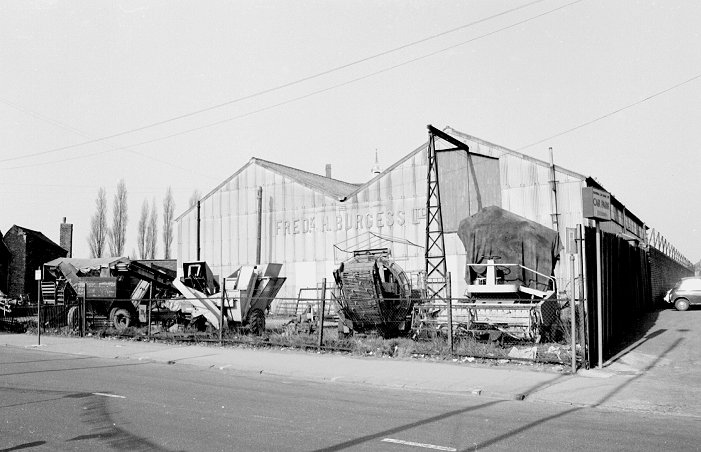
Frederick H. Burgess Limited were on the northern
side of the street next to the cattle market. They were farm
machinery suppliers. |
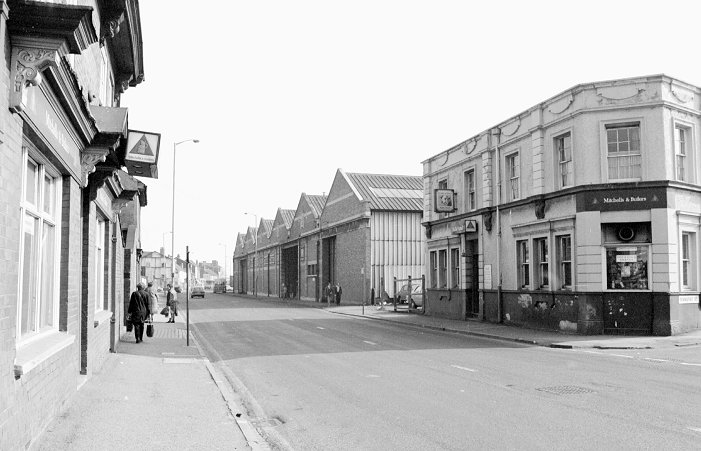
The view looking towards the old Cleveland Road
bus depot. On the left is the Red Cow and on the right the
Bull's Head. |
|
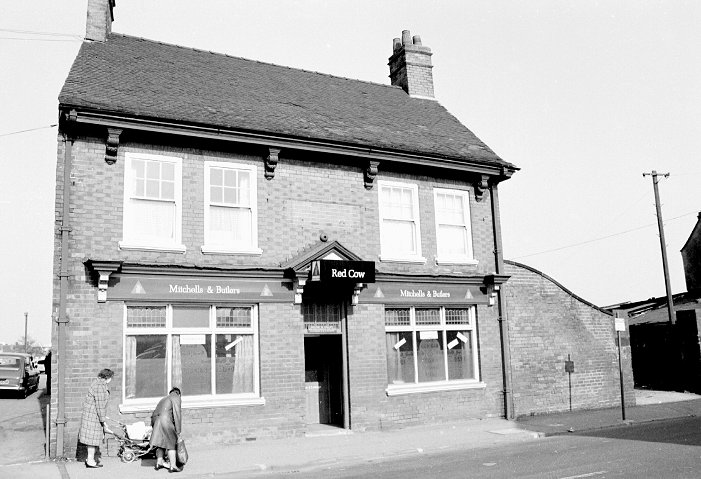
The Red Cow was a Mitchells & Butlers public
house. |
|
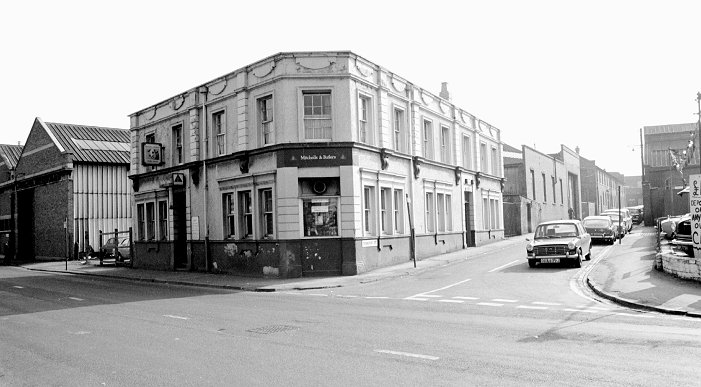
The Bull's Head, which was also a Mitchells &
Butlers public house, stood on the corner of Transport Road. |

On the right is the back of the Cleveland Road
Depot, headquarters of the Corporation Tramways Department. It was built in
1901 in readiness for the electric trams which were in operation
the following year. |
|
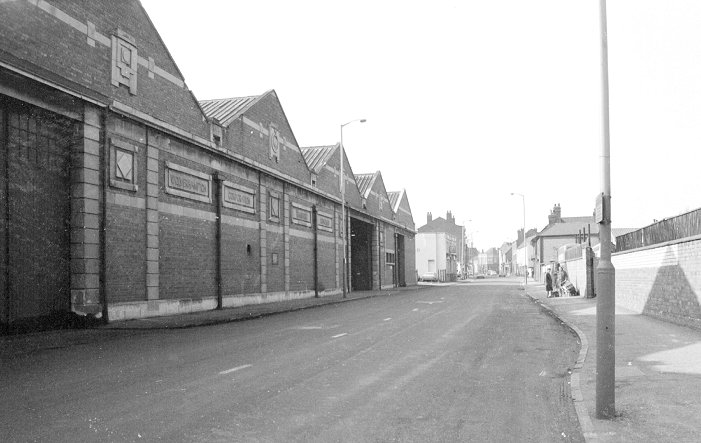
Another view of the old tram depot. |
|

Two doors away from the Red Cow was a butchers shop, run by
John C. C. Price & Company Limited. |
|
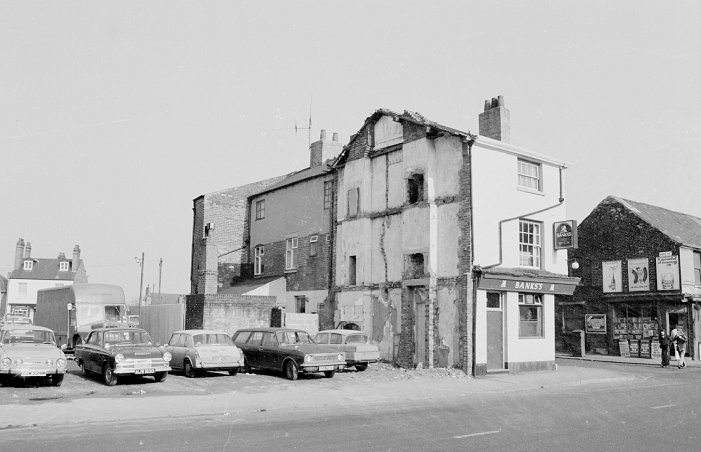
Another public house in Bilston Street was Banks's True
Briton, which stood on the corner of Bath Street. |

Opposite is Middle Cross Street. The building on
the left with the sloping television aerial is the premises of
Martin Erskine, Television aerials and repairs. The shop on the
corner is Classic Shoe Repair Specialists. |
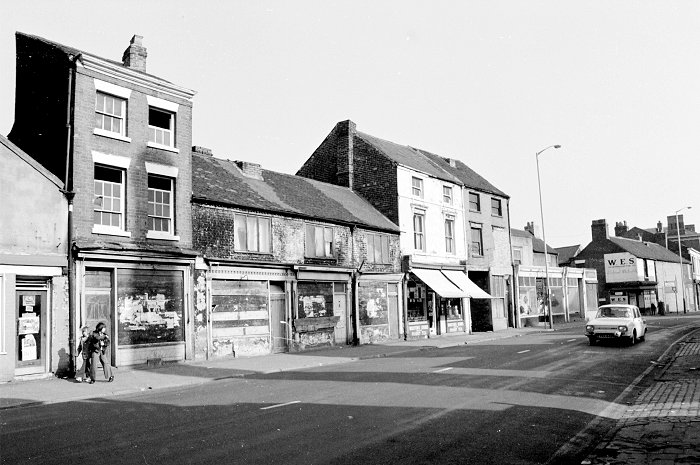
On the immediate left was E. Arnold's shoe repairs, then J.
David's butchers shop, William J. Rooker, and Mrs G. Hopkins
who had two adjacent shops, number 75 and number 76. She also lived
at number 77 as a young girl. The shop with the
canopy is Woottons Stores,
which sold grocery. On the front is an advert for Priory Tea. |
| I would like to thank Reebekah Gamston
for the following information:
Mrs Gladys Hopkins had two adjacent shops,
number 75 which was her antiques shop and
home, and number 76 her second hand clothes
shop. She also lived at number 77 which was
her home when she was a young girl, living
with her parents.
Gladys sold all kinds
of things at number 75 and would buy
jewellery and other items from people who
came into the shop. She also bought things
from jumble sales and sale rooms, and loaned
money against items that were brought into
the shop. Behind the shop was long middle
room, with a kitchen at the rear, and a
small outhouse. Upstairs was a single
bedroom.
Number 75 later became
a vegetable shop, selling items that were
bought from the Wholesale Market in Wulfruna
Street, and delivered to the shop by Billy
Whitehouse.
In Number 76 Gladys
sold second hand clothes which were mainly
bought from a lady called Mrs. Rafferty, or
from jumble sales. Other washed and ironed
clothes were purchased from people who
brought them to the shop. Behind the shop
was an extension where Gladys bred budgies
for sale. Above the shop were two small
bedrooms that were accessed from the bedroom
in number 75.
Number 77 had once been
a large shop and had floor to ceiling
windows that were whitewashed to make it
look as though there were net curtains. It
was a far from ideal home, cold in the
winter, and too hot in the summer. There
were flagstone floors on which the children
learned to write with sticks of chalk. In
the back room was a cooker, a fire, and
furniture. The house had no running water.
Water had to be brought in a container from
number 75. The roof was just corrugated
asbestos sheets.
There was also a single
bedroom with two beds, one for Les and Freda
Short, and another for their five children.
They sold TREND coal. |
|
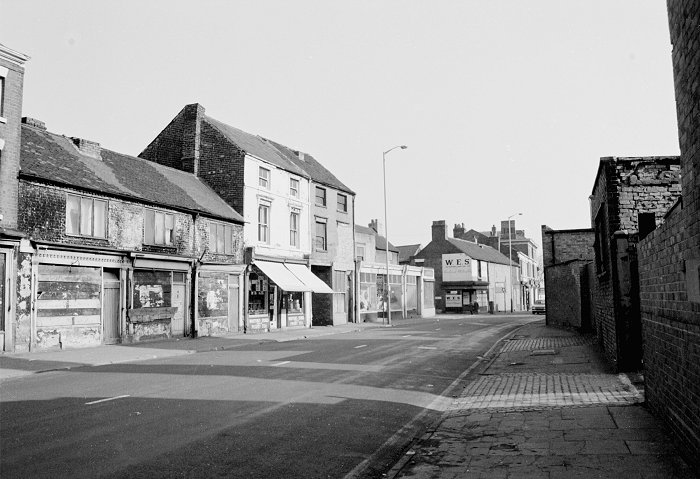
Behind the street lamp is BA Textiles, and T. & R. C. Evans,
butchers. On the
far corner of Sharrocks Street is W.E.S. Wolverhampton Limited, Electrical Wholesalers. The company was previously in Bell
Street and were stockists and wholesale suppliers of everything
electrical. |
|

The view looking back to W.E.S., and some of
the many small shops that were such a feature here. |
|
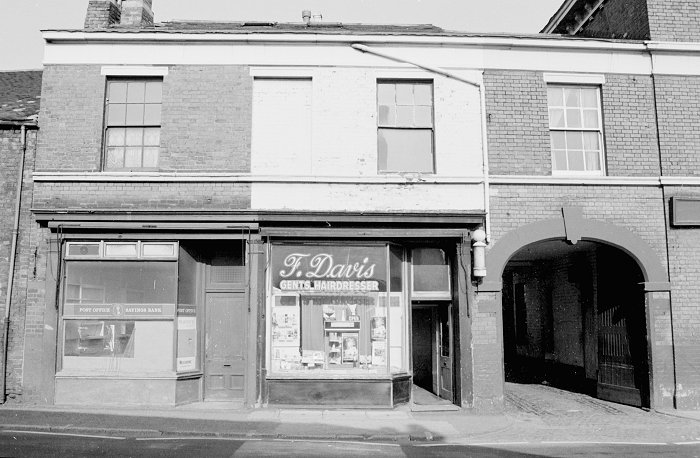
Bilston Street Post Office & Savings Bank, and F. Davies,
gents hairdresser. |
|

The substantial building in the centre was the
Horse & Jockey public house. |
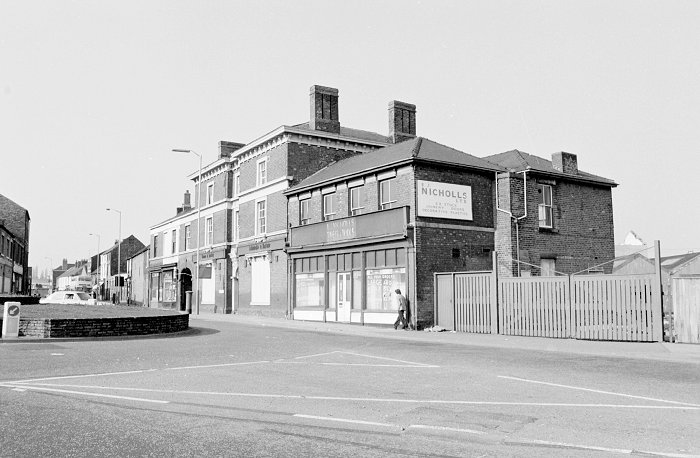
The walk ends opposite the premises of E. J.
Nicholls Limited, timber and tool merchants. The company
specialised in joinery, doors and decorative plastics, and moved
to Stafford Road, Fordhouses. |
|

An advert from 1897. |
|

|
|
Return to the
articles section |
|